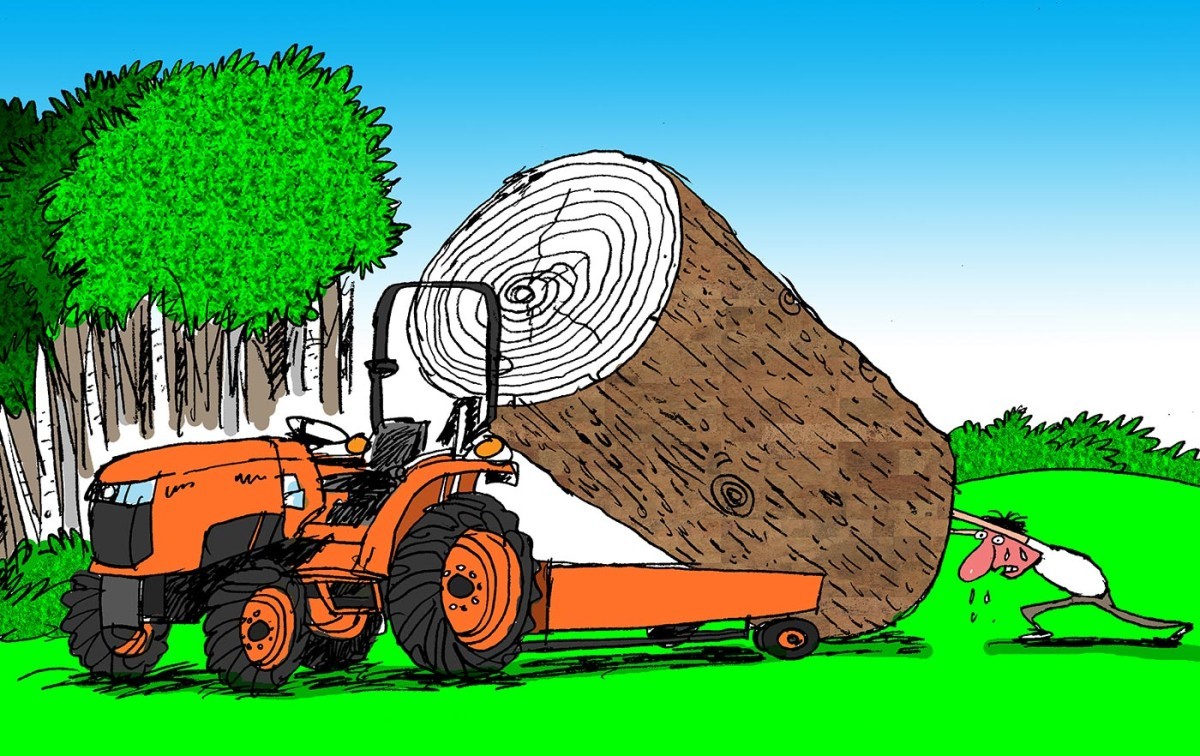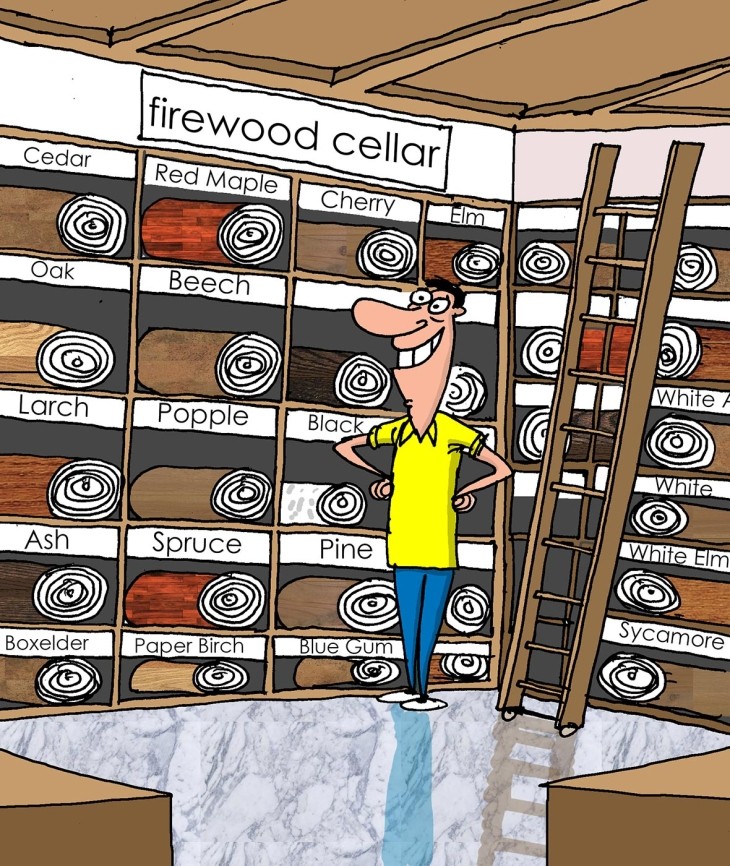Ever since last fall, I’ve been working on a tree. Chainsawing it up. Splitting it. Stacking loads of firewood. It’s a monster tree, about three-and-a-half feet across at the stump. An old roadside sugar maple.
The power company took it down after we alerted them that a huge part of it looked like it might split off and fall onto the electric lines. I say “took it down,” but what they really did was pollard it, leaving a 20-foot stump that looked like an upraised fist, the huge branch stumps like finger stubs. I was not happy. We had to hire an arborist with a bigger chainsaw than mine to fell the standing trunk. But all the wood remained on the ground, and I wasn’t going to leave it there.
First, I hate it when people do that. Looks ugly. It disrespects the tree. Second, there was a huge amount of primo firewood in that sucker. I figured the entire tree would yield two to three cords.
But processing it is a lot of work – much more than dealing with the 12- to 16-inch- diameter trees I harvest in the forest. First I sliced the trunk into 16-inch-thick rounds, like gigantic coasters, that could be split into firewood sticks. These rounds were heavy. It was all my baby Kubota could do to move them across the road. Once there, a peavey was needed to muscle them onto the splitter – set vertically – to crack them. (This is not the first time I’ve done this. So far, I’ve turned eight of these monster trees into firewood.)
Every time I tackled part of this latest roadside giant I think about how spoiled we are in northern New England when it comes to firewood. I mean, really: sugar maple, red oak, beech, hickory, birch, hornbeam, cherry, ash. All of these hard, high-BTU woods are available to us.
I remember hiking in the Rockies back in the 1990s and seeing an ad on a community bulletin board in Montana for firewood. It boasted, “all aspen and larch,” and I thought that, back in Maine, those weren’t considered firewood at all – much less high-quality firewood. Interestingly, aspen comes in lower than lodgepole pine in its BTU content, but ahead of ponderosa pine, a common Montana wood. Larch has a higher BTU value than aspen or those pines.
A guy in our town who, with his wife, owns a small firewood business harvesting from the family woodlot, once told me he had friends who lived elsewhere in Maine whose woodlot was almost exclusively hemlock. That’s what they used to heat their house. He said they told him that, when they came across a stick of aspen, they would “set those aside for the real cold nights.”
I have met people – “firewood snobs” – who, if you suggested burning aspen, would look at you as though you had suggested they beat their dog. There are folks who insist that only certain trees belong in their woodstoves. The firewood guy told me about a customer who insisted his delivery not include any round wood – it all had to be split. As though, my friend had said, “trees don’t grow round.”
I consider myself the opposite of a firewood snob. I call myself a “connoisseur.” I can find virtue in almost any wood.
Aspen? Easy to limb out, splits easily, burns hot. No problemo. Just the thing to warm up the house on a cool morning when you don’t need a long-lasting bed of coals. Where I live, they used to call it “biscuit wood.” You could make a small fire, and it would burn just long enough to bake a batch of biscuits on an old wood-burning kitchen stove but wouldn’t heat up the kitchen too much.
We burn pine. And spruce. Standing dead pines and spruces – ones that lost the race for light as the land was reverting to forest or died of, well, something – are super easy to harvest and already pretty well dried. Dried even further in my greenhouse woodshed, they’re just the thing for kindling or, in bigger pieces, for a short-term fire or for getting some sticks of hardwood going quickly. They’re so dry they don’t even pop and crackle. “That stuff is like gold,” my wife marveled one morning. I couldn’t resist a “Told you so!”
If you’re worried about creosote buildup in the chimney, consider that it’s not the pitch in the pine or spruce that causes creosote: it’s a combination of wet wood of any species, low combustion temperatures, inadequate airflow, and a cold chimney.
The fact is that almost every tree species on my 75 acres will find its way into my woodstove – red maple, cherry, beech, paper birch, yellow birch, popple, pine, spruce, ash, larch. Sometimes when I go out to the woodshed in the winter, I kind of feel like I’m a foodie at a buffet. “Yes, I think I’ll take a few pieces of aspen. And some pine; it’s not supposed to be too cold for the next few days.” Or “Going to be in the deep freeze the next week; I’ll load up on this beautiful ash and sugar maple – maybe add some yellow birch! With a soupçon of pine to get things going.”
I joked to my wife one time that it would be neat to have a woodshed where I could separate firewood by species and year, like a rich man’s wine cellar. Then I could take guests out and pontificate a little: “Oh, this is a 160-year-old sugar maple, cut in 2018. Very fine. Been drying for five years. We must try some of this. We’ll have a glass of Château Lafite Rothschild ’82 while we watch the fire. Beautiful flames from this tree. Positively sparkling.” Of course, you have to say it in a fake plummy British accent to get the total effect – and be able to afford the Château Lafite Rothschild rather than a boxed merlot.
My wife looked at me like I was crazy. In fact, she said, and I quote, “You’re nuts.” But then again, aren’t all connoisseurs a little nuts?
Anyway, I better get cracking on the rest of that maple. I could stack it in a special “reserve” section of the woodshed – give it a special name, write a card with an overwrought description, put the BTU-per-cord rating on it. Pull out some sticks when I want to impress someone.
Nawwww, I just want a good fire. Staying warm is what’s important.




Discussion *